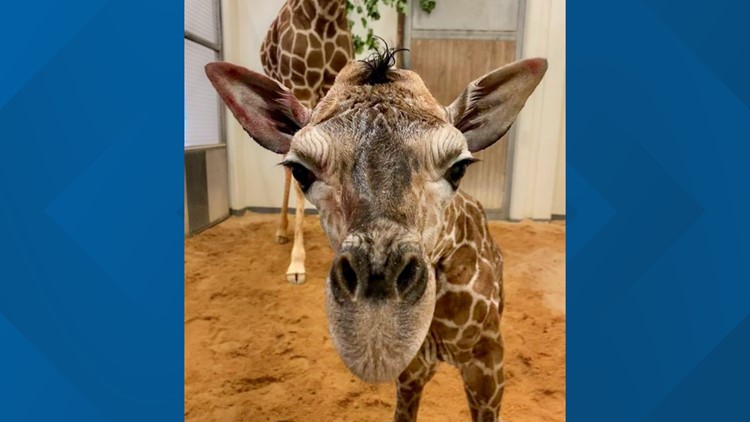ASHEBORO, N.C. — Some good news for your afternoon!
The North Carolina Zoo welcomed a new baby giraffe on Saturday, May 20.
Leia, a 13-year-old giraffe, is a first-time mom and is taking on her new duties in stride.
The calf is a healthy baby boy and is already about six feet tall and 145 lbs., which is within the parameters of a healthy calf, said the Zoo.
The calf joins as the fifth member of the herd, with males Turbo and Jack (the calf's father) and females Leia and Amelia, said the Zoo.
“Leia and her calf are doing amazingly well. Our team could not be prouder of how attentive Leia has been with her firstborn," said giraffe zookeepers Kristi Myers, Jason Balder, Mary Wilson, and Kelly Davis.
Right now, the Zoo said mom and baby are bonding in private, but the zoo will be determining when they can enter the public eye with the rest of the herd.
"This new arrival brings the team lots of happiness and excitement to have some young, spunky energy around. The rest of the giraffe tower - Jack, Turbo and Amelia - are all very curious of the newbie and are bopping noses whenever they can,” the zookeepers continued.
“The giraffes at the North Carolina Zoo serve as ambassadors for their wild cousins, giving our guests the opportunity to learn about these majestic creatures and the conservation challenges they face. The Zoo’s direct engagement with conservation in Africa means that every Zoo visitor is helping to ensure the future of this and other species," said the North Carolina Zoo Director and CEO, Pat Simmons.
Giraffes are the tallest land animals, with female giraffes growing up to 14 feet tall and male giraffes growing to a staggering 18 feet tall. This means a giraffe could snoop through your second-story window, according to the Zoo.
Giraffes can live up to 25 years in the wild and longer under the care of humans, said the Zoo.
Additionally, no two giraffes have the same coat pattern, wrote the Zoo.
Giraffes "are listed as a "Vulnerable" species according to the International Union for Conservation of Nature (IUCN), and approximately 68,000 are found in the wild, with numbers decreasing because of habitat loss, poaching (illegal hunting), and disease threatening their distribution throughout Africa," wrote the NC Zoo.
You can learn more about the NC Zoo's giraffe conservation work and research on their blog.



